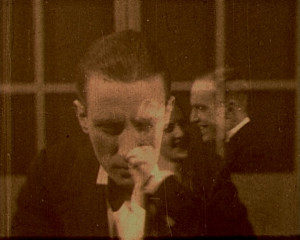
"Drama. Malaya, in colonial days. A narcotics dealer (himself an addict and drunkard) kills his native supplier with his own wavy-bladed kris. Later, the drug-buyer is killed at the moment of threatening violence himself. The kris is found behind the curtains. A case of retribution?" (EAFA Database).
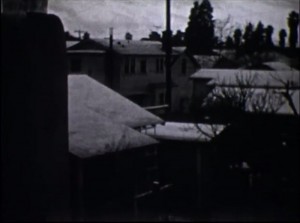
Footage of residential Los Angeles after a snowstorm in 1932. Opens with an Amateur Cinema League leader and a stop-motion animated title.
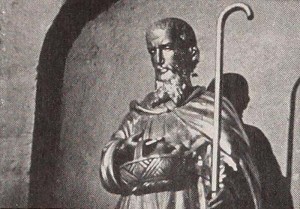
"In L'Ile d'Orléans, Radford and Judith Crawley cross a bridge and come back. But they cross a bridge with a difference, because what they see and what they make us see on the other side of that bridge is the inner essence of a withdrawn people, who proudly conserve the memory of things past in the realities of things here. The Maxim Award winner opens a door into a region of Eastern Canada — the Island of Orleans — where old French and old Canadian folkways are lived placidly and with dignity. Actually, the camera crosses a very modern bridge at the film's beginning and returns over it at its end. But, once in L'Ile d'Orléans, in the hands of the two Crawleys, this Twentieth Century box of wheels and gears spins a tale of yesterday, even if it pictures just what its lens sees today. The landscape and the old houses, some of them there for more than two hundred years, set the decor, after which we come to the dwellers in this separate Arcady. They do, with a delightful unconsciousness of being observed, the things that make up their daily lives, and, when invited to take notice of the visitors, they do this with a fine courtesy that is the very refinement of hospitality. Mr. and Mrs. Crawley devote a liberal part of their footage to a careful study of home cheese making, in which camera positions and a large number of close shots turn what might have been a dull and factual record into something of cinematographic distinction. The highlight of the Crawleys' film is a leisurely and sympathetic watching of what is the highlight of life in l'Ile d'Orléans — the country Sunday. We see different churches, all of a general type, but each with its essential neighborhood individuality. Finally, one of these is singled out for an extensive camera visit. Bells ring and the country priest is shown with his gravity and solemn courtesy. The countryside comes to life with its church bound inhabitants who wind over the simple roads slowly yet purposefully and with the assurance of those who know that the land is theirs as it was their fathers'. With such pictures of everyday life, scored with appropriate music for double turntable showing, Mr. and Mrs. Crawley have etched an epoch, in a record which can stand on its own feet with good genre description in any art form. With not a single concession to sentimentality — as should be the case in honest work — but with a sure feeling for that which reaches out for the finer emotions, they have shown us what they found across the bridge. Here is personal filming at its best." Movie Makers, Dec. 1939, 608-609.

Documental sobre el Club Femení i d'Esports de Barcelona que recull les úniques imatges en moviment d'aquesta institució pionera. Documentary about the Women's and Sports Club of Barcelona that collects the only moving images of this pioneering institution.
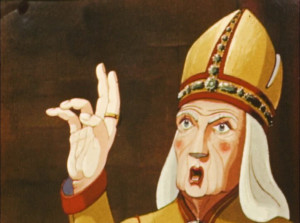
"Émile Gallet, ACL, a man of rare talents and infinite patience, treated us to a showing the other day of his 16mm. color cartoon, The Legend of St. Nicholas, which, with a six year interruption by the war, has been in the making since 1938. Based on an old French folk song of the 12th century, the cartoon relates the fairy tale adventures of three little children, a wicked butcher and kindly St. Nicholas." Movie Makers, Sept. 1949, 327.
"La Reata depicts a lost art, that of making a lariat or lasso. The cowhide is stretched and staked out on the ground to dry. Then, with a long circular cut, a rawhide rope is made, cured, then braided to form the rope used in this fast disappearing custom. A leisurely pace gives the film much of its charm, plus a narrator who is in no rush - a welcome change" PSA Journal, Aug. 1967, 36.
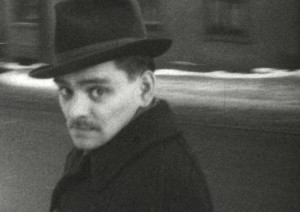
C’est à l’automne 1937, au retour de l’exposition universelle de Paris, qu’Omer Parent entreprend la réalisation de l’œuvre expérimentale La vie d’Émile Lazo. En réaction directe à la « loi du cadenas » émise par le gouvernement Duplessis, le titre de ce court-métrage réfère au tout premier film visé par cette nouvelle motion censurogène, imposée aux médias : The life of Emile Zola de William Dieterle (1937).
S’il s’agit là du premier film expérimental achevé par Parent, l’œuvre est également issue d’une collaboration amicale au sein de professeurs de l’École des beaux-arts de Québec qui se prêtent au jeu de l’acteur : la sculptrice Sylvia d’Aoust (1902-2004), la dessinatrice Arline Généreux (1897-1987), la graveuse Simone Hudon (1905-1984), le couple Madeleine Des Rosiers (1904-1994) et son mari Jean Paul Lemieux (1904-1990), tous les deux peintres. À cette petite bande — qui fréquente l’éphémère atelier du « Nordet » où le tournage a lieu —, s’ajoute Robert Lapalme (1908-1997), caricaturiste et illustrateur de talent au style immédiatement reconnaissable, seule figure à ne pas occuper alors un poste de professeur. Sorte d’électron libre, Lapalme, en plus de rédiger le scénario du film en écho à sa propre existence, y incarne le rôle d’Émile Lazo. Terminé au printemps 1938, ce film « amateur » porte sur la condition de l’artiste « moderne » vis-à-vis de l’académisme dont il cherche à se libérer.
Peu après sa création, La vie d’Émile Lazo a été projetée à quelques reprises lors de présentations publiques et particulières dont une visait, en 1941, à célébrer l’installation d’Alfred Pellan — meilleur ami de Parent — dans son nouvel atelier. Depuis cette époque, ce film, dont il n’existe que deux copies sur pellicule, est demeuré pour ainsi dire inédit, connu seulement par quelques amateurs et spécialistes. Zoom-out est fier de présenter cette satire, rare et burlesque.
In the autumn of 1937, upon his return from the Paris Universal Exhibition, Omer Parent undertakes the creation of the experimental work "The Life of Emile Lazo". In direct reaction to the "Padlock Law" issued by the Duplessis government, the title of this short movie refers to the very first film targeted by this new censorship motion imposed on the media: William Dieterle's "The Life of Emile Zola" (1937). Completed in the spring of 1938, this "amateur" movie deals with the condition of the "modern" artist in relation to academicism from which he seeks to free himself.
While this is Parent's first experimental work, it is also the result of a friendly collaboration among professors at the École des beaux-arts de Québec who lend themselves to the role of actors: sculptor Sylvia d'Aoust (1902-2004), draughtswoman Arline Généreux (1897-1987), engraver Simone Hudon (1905-1984), the couple Madeleine Des Rosiers (1904-1994) and her husband Jean Paul Lemieux (1904-1990), both painters. A little appart in this small group of artists and professors — who frequents the ephemeral "Nordet" studio where filming takes place— Robert Lapalme (1908-1997), a talented caricaturist and illustrator with a immediately recognizable style, is added. Lapalme, in addition to writing the film's screenplay in echo with his own existence, also plays the role of Émile Lazo.
Shortly after its creation, "The Life of Émile Lazo" was screened a few times during public and private presentations, one of which aimed, in 1941, to celebrate the installation of Alfred Pellan—Parent's best friend—in his new studio. Since then, this rare and burlesque satire, of which only two copies on film exist, has remained virtually unpublished, known only to a few enthusiasts and specialists until fall of 2022 where it was realeased online.
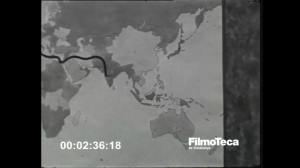
(Catalan): Un explorador vestit de safari recorre el món fent escala a ciutats com Roma, El Caire, Bombai, Nova York i Tànger, fins al seu retorn a Barcelona. En el seu periple entra a un bar de Nova York, visita una barberia i veu com un pidolaire té una màquina registradora. A Camerún veu un mico, un senglar, beu aigua d'un coco, es topa amb un hipopòtam. A Tànger visita la ciutat i els seus habitants, entra a una mesquita i coincideix amb un grup de música i ball. Finalment, a la seva arribada a Barcelona és rebut amb els més grans honors.
Mockumentary that depicts a fictional trip around the world. An explorer travels the world, stopping in cities such as Rome, Cairo, Mumbai, New York and Tangier. During the journey we see him entering a bar in New York, visiting a barber shop and seeing how a beggar has a cash register. In Cameroon, he sees a monkey, a wild boar, and runs into a hippopotamus. He also drinks water from a coconut. In Tangier, he enters a mosque and meets a music and dance group. Finally, upon his arrival to Barcelona, he is received with the greatest honors. All the locations were recreated by the director.
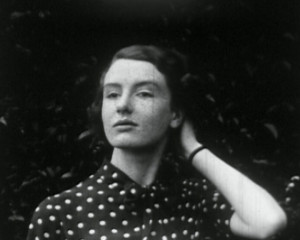
"Having slept the night beside a haystack, hapless travelling salesman Hercules Smith (Elmer Quane) awakes with his trusty canine companion Snapjack (Clovis Bige). Approaching a nearby house, past a man affixing a 'No Hawkers' sign to the gate, Hercules unsuccessfully attempts to sell a vacuum cleaner to the lady of the house, but manages to secure a position as a general hand. But each of his tasks end miserably with a series of unfortunate incidents involving cars, bees and unruly children. To make matters worse, Hercules is mocked at every turn by an elderly lady, who hands him instruction booklets and pamphlets for every occasion, from a copy of the highway code to a beekeeping manual and a guide to playing checkers. Fed up, Hercules retires to the back of the house for tea, but is constantly interrupted by the family's petulant cook, who deals out a similarly rough treatment to a prospective kitchenhand, Krimhild Colquhoun (Joan Bulleid). Setting a booby trap for the cook, the pair run off arm in arm, collecting their paycheques at the front door. Sitting in a field, a series of gags leads to an embrace, as the elderly lady delivers a final pamphlet: 'Advice for Young Mothers'" (EAFA Database).
Total Pages: 299